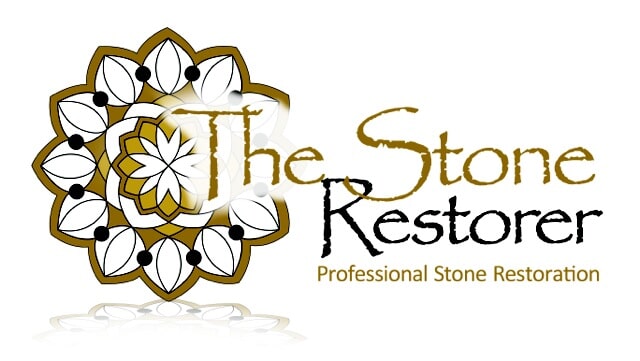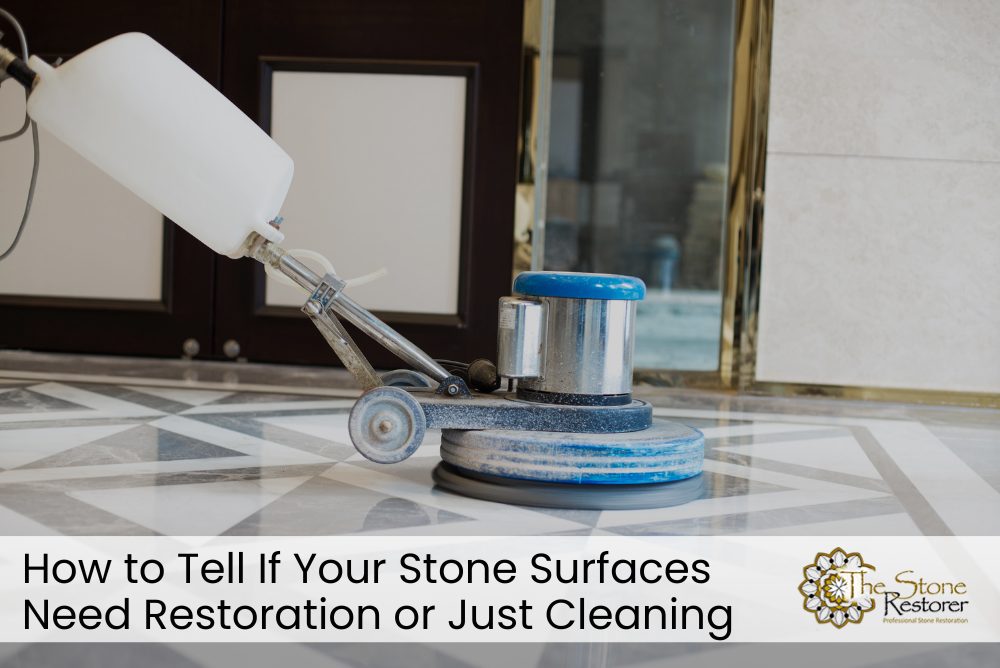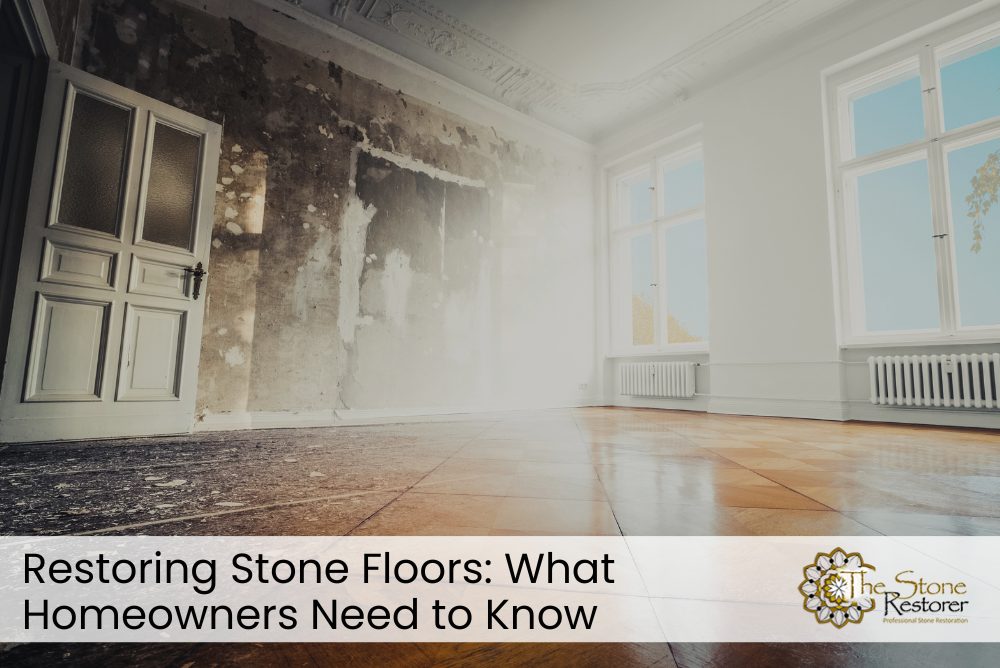Stone brings beauty and strength to any space. From benchtops to bathroom tiles, it adds value and a touch of class. But keeping that shine? That’s the real game. Stone is strong but not invincible. It needs care, just like anything that’s meant to last. Whether it’s marble, granite, limestone or travertine, proper upkeep helps your surfaces stay fresh, clean and full of life.
Before we jump in, one thing matters above all: stone restoration is not a one-time fix. It’s a habit. Let’s break down the best ways to keep your stone surfaces shining for the long haul.
Choose the Right Cleaner Every Time
Not all cleaners are made equal. Some damage stone fast. Others protect it.
Stone is porous. That means it can soak up liquids. Use the wrong cleaner and you could strip the surface or stain it. Avoid vinegar, bleach and acidic sprays. These eat away at the surface and leave dull marks. Instead, use a pH-neutral cleaner made for natural stone.
How to pick a cleaner:
- Look for “stone-safe” or “pH-neutral” on the label
- Avoid anything with lemon, vinegar or ammonia
- Try spray-on products for light daily cleaning
For best results:
- Wipe spills right away
- Use a soft cloth or microfiber towel
- Clean weekly with warm water and gentle soap if you don’t have a stone cleaner
For step-by-step guidance, check out the best cleaning techniques for natural stone tiles.
Seal the Stone. It’s a Game Changer
Sealing is your stone’s shield. It keeps water, oils and grime from sinking in.
Most natural stones—like marble, limestone and sandstone—need sealing. Some come pre-sealed, but even then, that protection wears off over time. A good seal keeps your surface shiny and easier to clean.
When to seal:
- After a deep clean
- Once a year for high-traffic areas
- Every 2–3 years for other areas
How to test if it’s time: Drop a bit of water on the surface. If it soaks in within 30 seconds, it’s time to reseal.
Types of sealers:
- Penetrating sealers: soak into the stone, invisible finish, lasts longer
- Topical sealers: sit on top, make stone shiny, wear off faster
Regular sealing is one of the best tips for keeping natural stone tiles looking new and strong.
Know What Stone You’re Dealing With
Different stones need different care. What works for granite might harm marble.
Main types of stone:
- Marble: soft, can scratch and stain easy
- Granite: strong, less porous, but still needs sealing
- Travertine: soft, needs sealing and gentle cleaning
- Limestone: light and porous, stains easy
- Slate: textured, can flake if not sealed
Understanding your stone helps you make better cleaning and care choices. For example, polished marble needs soft cloths, while granite can handle scrubbing.
And if you’re not sure what stone you’ve got? Call a pro to help. They can test it on the spot. Before you go it alone, consider whether it’s worth comparing professional vs DIY natural stone cleaning.
Protect Stone from Heat, Stains and Scratches
Prevention beats repair every time.
Common damage comes from:
- Hot pans on benchtops
- Wine, coffee or citrus spills
- Dragging furniture or heavy pots
- Grit under shoes on stone floors
How to prevent damage:
- Use coasters under drinks
- Put trivets or heat mats under hot items
- Place rugs in high-traffic areas
- Add felt pads to chair legs
Once stone gets scratched or etched, it takes time and cost to fix. So stop the damage before it starts.
Clean Spills Fast and the Right Way
Spills are sneaky. They sink in and stain quick. But if you clean them right away, you avoid big issues.
Steps for quick spill clean-up:
- Blot the spill—don’t rub it
- Use a soft cloth and warm water
- Apply a stone-safe cleaner if needed
- Dry with a clean towel
For oil stains, use a poultice paste. It draws out the stain slowly. You can buy one or make it at home with baking soda and water. Apply, cover with plastic, wait 24 hours, and wipe clean.
Regular Dusting and Mopping Matters More Than You Think
Dust and grit scratch your floors. Over time, they make stone dull and rough.
Use a dry mop or vacuum with a soft brush to remove grit. Do this at least twice a week for busy areas. Follow with a damp mop and a pH-neutral cleaner once a week.
Best tools for the job:
- Microfiber mops
- Soft-bristle vacuum heads
- Non-abrasive sponges
Stick to simple routines and your stone will keep its glow longer.
Polish Occasionally to Restore Shine
Even with good care, stone can lose its gloss. When that happens, polishing brings it back.
Polishing helps:
- Remove small scratches
- Boost shine
- Make cleaning easier
You can use polishing powder or cream made for your stone type. Rub it in with a soft cloth, then buff it out. Do this every few months or as needed.
For benchtops, consider a polish spray with a sealer inside. It cleans and protects in one go.
Don’t polish too often, though. Overdoing it can make stone slippery or waxy.
Get a Professional Touch When Needed
Sometimes stone needs more than a wipe-down. When stains won’t go or surfaces lose their finish, it’s time to bring in the pros.
Professional stone restorers use tools and methods you can’t get at home. They can:
- Grind and hone scratched surfaces
- Remove deep stains and etching
- Re-seal and re-polish
- Fix cracks or chips
Look for certified stone care experts. They know how to treat different stones without causing more harm. It’s not always cheap, but it can save you thousands in replacement costs.
Frequently Asked Questions
1. How often should I clean my stone surfaces?
You should clean stone surfaces lightly every few days and deep clean weekly. Daily dusting removes grit and debris that cause scratches. Use a dry microfiber cloth or vacuum with a soft head. Weekly cleaning with warm water and a pH-neutral cleaner helps remove grime and refresh the sealant layer.
For kitchens or bathrooms, clean more often. Food spills, soap scum and watermarks build up fast in these spots. High-traffic areas, like hallways or entryways, also need more regular attention.
Avoid harsh chemicals, scrubbing pads or acidic cleaners. They might work fast but cause long-term damage. Simple habits like wiping spills quickly and using the right cleaner go a long way.
2. What’s the difference between sealing and polishing?
Sealing is about protection. It blocks liquids and stains from soaking into the stone. Think of it as waterproofing. Polishing, on the other hand, brings back the stone’s shine and smooth feel. It improves how the surface looks but doesn’t protect from stains.
Both matter, but they serve different purposes. You need to seal most natural stones every 1–2 years, depending on how much wear and tear they get. Polishing should only happen when the stone starts to look dull or scratched. Over-polishing can make the surface slick and unsafe, especially on floors.
3. Can I use vinegar or lemon juice to clean stone?
No. Vinegar and lemon are acidic. They eat away at the surface of many stones like marble, limestone and travertine. Over time, they cause dull spots called etching. These spots can’t be cleaned off—you’ll need to hone or polish them to fix it.
Even if the stone looks fine after a few uses, the damage adds up. Stick to pH-neutral cleaners made for natural stone. If you want a natural option, use warm water and mild dish soap. Always dry the surface after cleaning to avoid water marks.
4. How do I fix a dull or cloudy stone surface?
Cloudy stone means either a worn seal or surface damage. First, clean the surface with a pH-neutral cleaner. Then test for sealing. Drop water on it. If it soaks in fast, reseal it.
If sealing doesn’t fix the look, try polishing. Use a stone polishing powder or cream. Rub it in with a soft cloth, then buff it. If that doesn’t help, the surface may need honing or grinding. That’s where a pro comes in. Don’t keep polishing a damaged surface—it can make it worse.
5. What’s the best way to maintain stone in bathrooms?
Bathrooms need extra care. Water, soap and moisture break down stone faster than dry areas.
To keep bathroom stone clean:
- Wipe down surfaces after each use
- Use a squeegee on shower walls
- Seal the stone often
- Ventilate to prevent mould
Avoid leaving shampoo bottles or soap bars on stone surfaces. They cause rings and stains. Use trays or stands instead. Also, skip bleach and bathroom sprays. They ruin the finish and eat the sealant. Use stone-safe cleaners and soft cloths instead.
Give Your Stone the Life It Deserves
Stone isn’t just decoration. It’s an investment. When you care for it right, it stays beautiful and strong for decades.
Make smart choices—seal it, clean it right, protect it, and polish when needed. And when it gets too tough to handle, call someone who knows how to bring it back to life.
Your stone doesn’t need miracles. It needs maintenance. Visit The Stone Restorer to get expert help and keep your stone surfaces shining for life.
Give us a call today at 0414 469 301 or ask us for a fast free quote on your tile cleaning or restoration project






